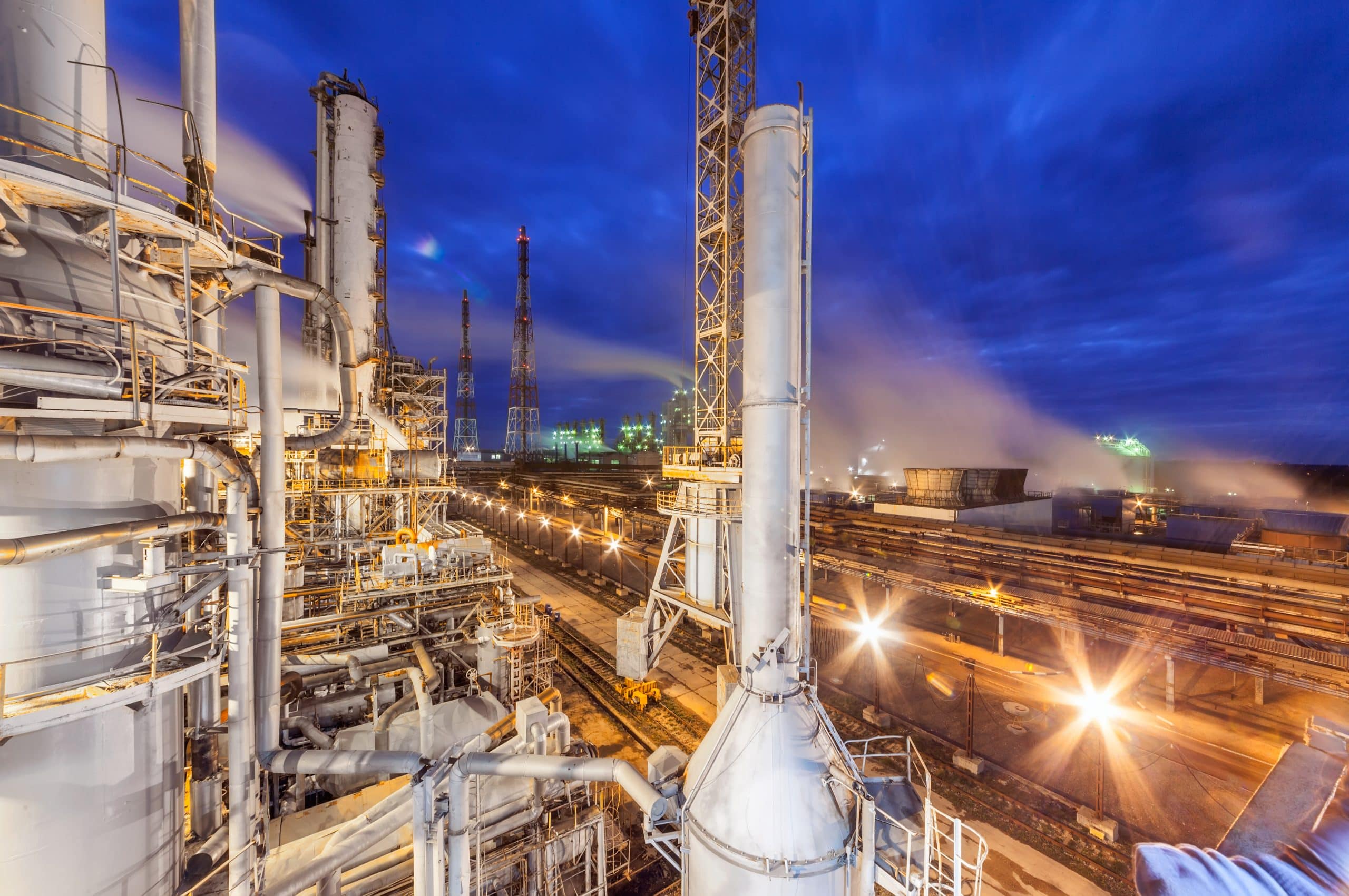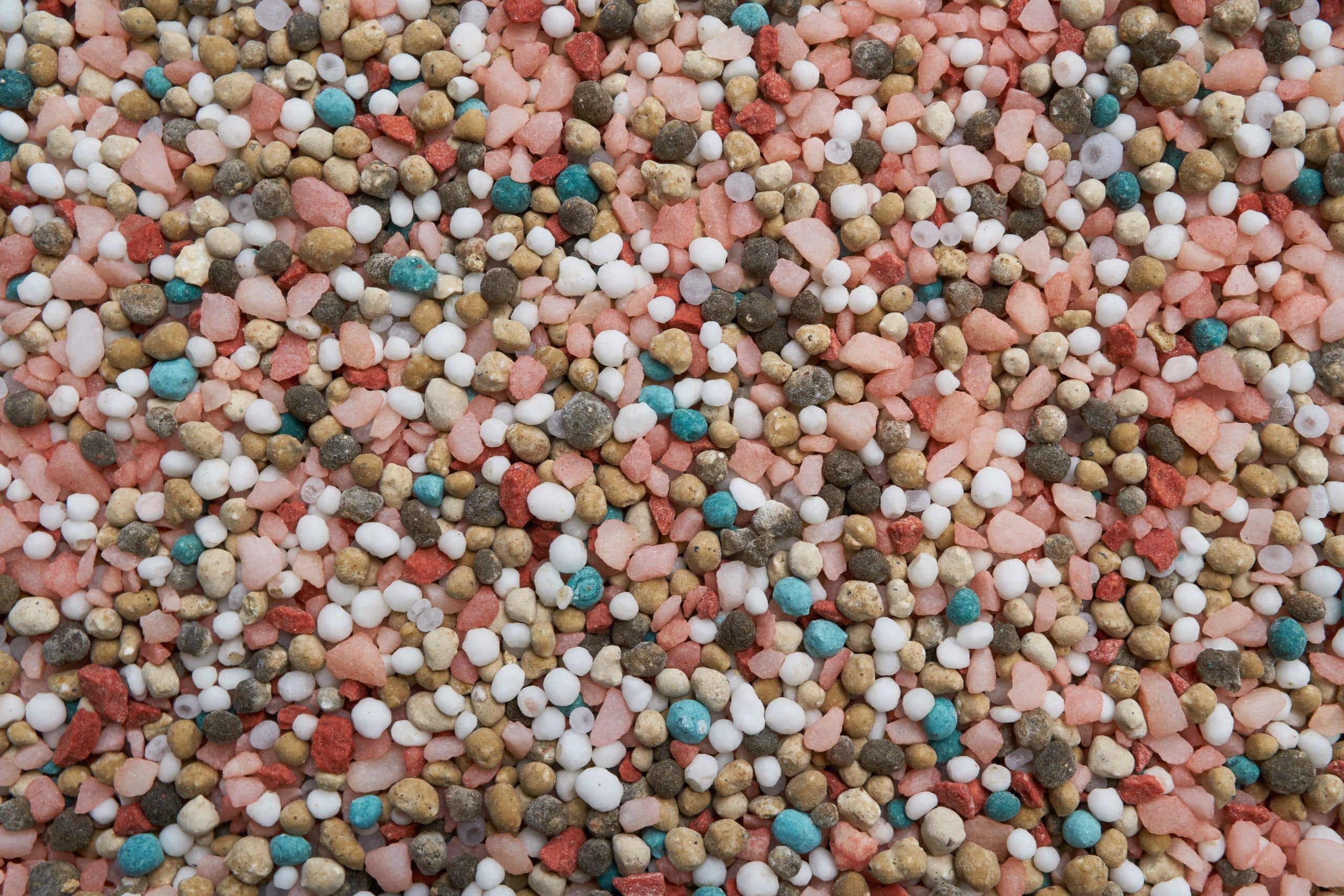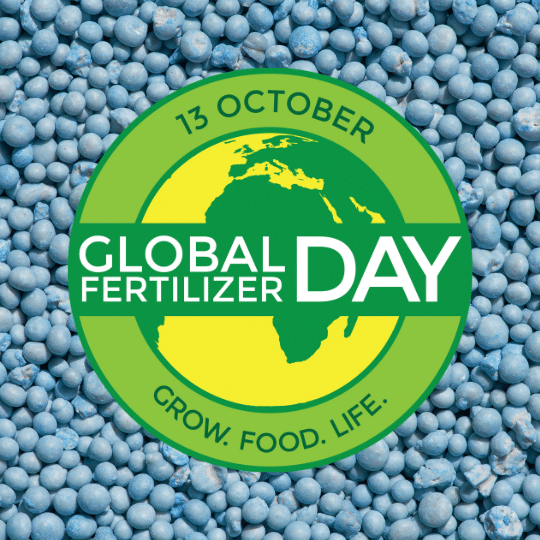Answering the question: What is fertilizer made of?
Seventeen elements. That’s what a plant needs to reach its full nutritional potential. Three of those elements—carbon, hydrogen and oxygen—are obtained through the air and water. The remaining 14 have to come from the soil through the plant’s roots.
These elements are what make up our modern day fertilizers. They’re divided into three categories: primary macronutrients, secondary macronutrients and micronutrients.
Primary Macronutrients
These are the major building blocks of all fertilizers and make up the bulk of all fertilizer produced.
Nitrogen (N)
It may be number seven on the periodic table, but as a primary macronutrient, nitrogen is number one. It’s essential in the formation of vital proteins not just in the plants we eat, but all living things.
Although about 78 percent of the air we breathe is nitrogen, many plants cannot get their nitrogen out of the atmosphere. It has to come through other means. Even then, turning the organic nitrogen into a form which the plants can absorb is a long, complicated process.
With the application of nitrogen in the form of ammonium or nitrates, farmers can supply their crops with all the nitrogen they need.
Phosphorus (P)
The macronutrient phosphorus is key to all energy processes in plants, like photosynthesis, how plants to convert sunlight into energy. It’s also important for respiration, cell division and cell growth—things that are integral to the development of the plant and its fruit.
The phosphorus in most commercial fertilizers is surface mined from phosphate rock, naturally occurring sedimentary deposits that formed millions of years ago. It takes a few chemical processes to turn the phosphorus fertilizer into a form that can be absorbed by plants.
Further reactions with ammonia can produce fertilizers containing both phosphorus and nitrogen in one product.
Potassium (K)
You know potassium. It’s in your bananas and avocados. And it’s responsible for producing higher quality crops, things like better baking wheat or corn with more kernels on each ear. It also helps plants weather the winter. Between 95-98% of K in soil is unavailable to plants as it is in a mineral form.
The potassium used in today’s fertilizers is mined from deep within the ground—the same way as table salt—in the form of potash. This crystalline mineral is one of the most abundant on the planet. Several chemical combinations are used to convert the potassium into plant food, including potassium chloride, potassium sulfate and potassium nitrate.
Secondary Macronutrients
These elements are called “secondary” not because they are less essential, but because the soil provides most of nutrition necessary to optimize crop growth.. The secondary macronutrients are needed at the same quantities as the primary macronutrients, but require a smaller amount of fertilizer.
The secondary macronutrients are needed at the same quantities as the primary macronutrients (e.g., S and Mg are needed at the same quantity as P) They are secondary, because the soil typically provides most of the necessary amount. N, P, and K are less plant available in the soil.
Calcium (Ca)
Calcium is used to help reduce soil acidity and aids nutrient absorption within the plant itself. It also improves a plant’s ability to resist disease.
Magnesium (Mg)
Magnesium is a component of chlorophyll so, like phosphorus, is necessary for photosynthesis. It’s also important to help the plant metabolize that very same phosphorus molecule.
Sulfur (S)
Sulfur is another element that is already in the soil, but typically in amounts that are insufficient for many crops. Plants use sulfur to synthesize important amino acids and it’s useful to boost winter hardiness.
Micronutrients
Micronutrients may sound less important, but they’re not. The ‘micro’ means plants only require trace amounts, but they still can’t do without them. These micronutrients are:
Together, they support all aspects of plant growth including structural integrity, vitamin production and increasing yields. B, Cu, Zn and Mn are the micronutrient elements most often in short supply in the soil.
So now we understand what goes into fertilizers. The next step is knowing how to apply these nutrients effectively and efficiently to achieve the best results with the smallest impact on the planet.
Next: Fertilizer Improves Lives









